With a face weathered by decades at sea and framed by bushy salt-and-pepper eyebrows, Vice Adm. William F. “Bull” Halsey Jr. often looked nearer 80-something than his actual 61 years.
Late on Nov. 4, 1943, lines creased the Bull’s brow even more deeply. That afternoon, at his advance headquarters on Espiritu Santo in the New Hebrides, northeast of Australia,Halsey had learned from the crew of a patrolling B-24 of a powerful enemy fleet moving in the Bismarck Sea.
Bound from the Imperial Navy’s main Central Pacific base 1,900 miles northwest at Truk, seven heavy cruisers, four smaller warships, and a train of troopships were steaming toward Rabaul, Japan’s big South Pacific stronghold on New Britain. That island’s position in the Bismarck Archipelago off New Guinea lent Rabaul enormous weight in the Pacific war.
Even in the oppressive heat, the report sent a chill through the Allied commander of the South Pacific Area.
Days before, Halsey had taken the last major step in his long campaign to neutralize the bastion at Rabaul by launching an invasion at Cape Torokina, Bougainville, only 250 miles southeast of the enemy stronghold.
Dissecting the scout plane’s report, Halsey concluded that after a pause at Rabaul’s Simpson Harbor, the Japanese force intended to counterattack. Those seven heavy cruisers worried him.
“Presumably they would refuel,” he recalled, “then run down to Torokina the following night and sink our transports and bombard our precarious positions.”
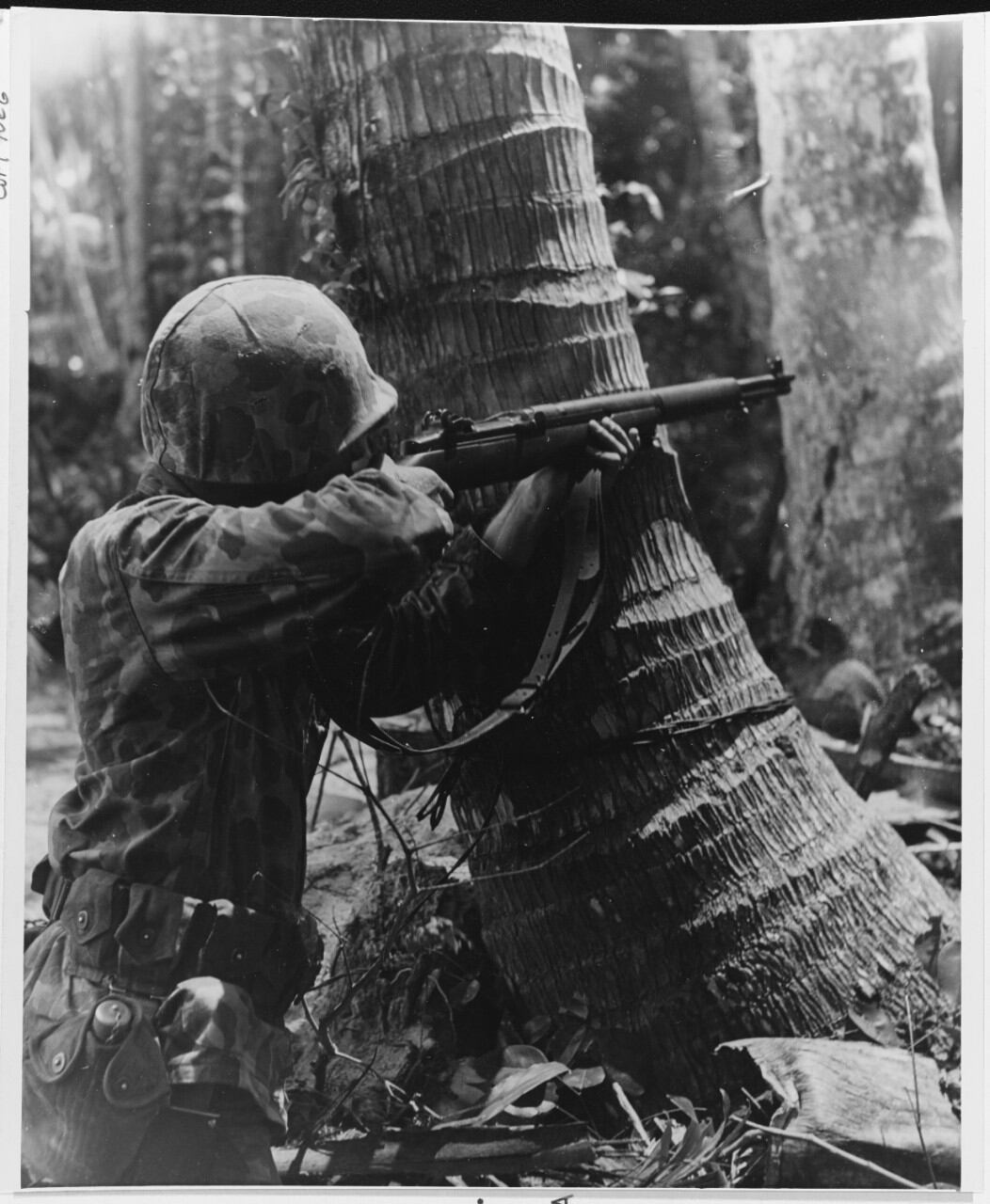
The invasion at Cape Torokina, undertaken the morning of Nov. 1, had caught the Japanese off-guard.
From Rabaul the Japanese 11th Air Fleet sent three waves of land-based planes, but their bombs caused little harm. The strikes cost the Japanese 16 Zero fighters and three Aichi D3A Val dive bombers; two additional Vals with severe battle damage crash-landed back at Rabaul.
The Japanese next sent a force of cruisers and destroyers that was bearing down on Torokina when American scout planes spotted them.
At nearby Empress Augusta Bay, Rear Adm. Aaron S. “Tip” Merrill arrayed four light cruisers and eight destroyers.
In a spectacle that unfolded in the early hours of Nov. 2, Merrill’s ships traded dozens of torpedoes and thousands of shells with the attackers.
American gunners won the night, their radar-controlled rounds sinking a light cruiser and a destroyer and scoring hits on a heavy cruiser — a solid victory for Merrill, whose own damage report was limited to a light cruiser and two destroyers.
After fending off attacks by more than 100 Japanese planes later that morning, Merrill sailed southeast 400 miles to Purvis Bay to rendezvous with an oiler and refuel his vessels and rest his exhausted crews.
The surviving Japanese ships withdrew to Rabaul, where the new force that sortied from Truk on Nov. 3 was also apparently headed — justifiably putting Halsey on edge. Not only had his forces barely secured a beachhead on Bougainville, but an American convoy was en route there with 3,500 troops and 5,000 tons of supplies.
A few destroyers guarded the convoy. Against so muscular an enemy, the supply ships would be naked.
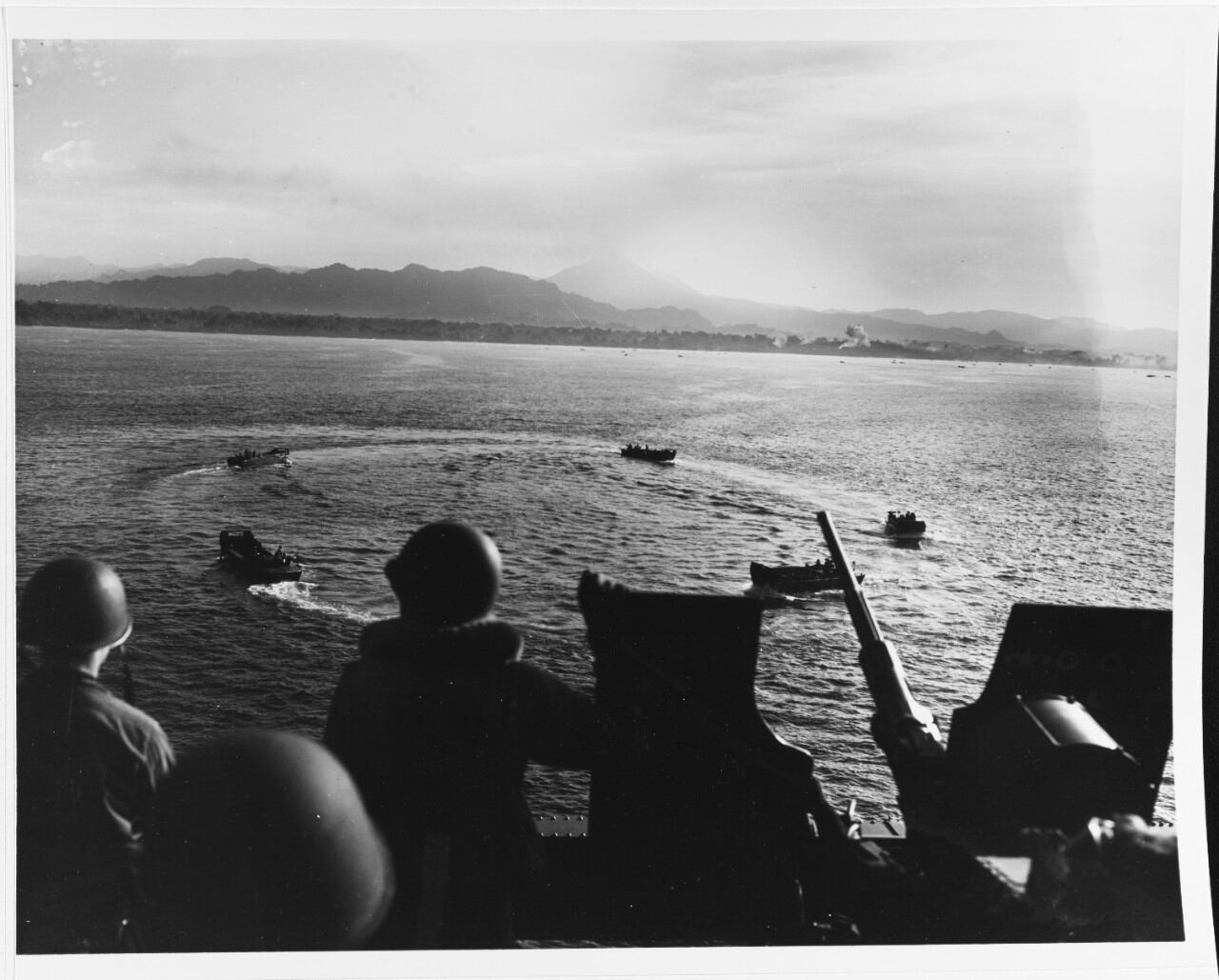
“This was the most desperate emergency that confronted me in my entire term as Commander South Pacific,” Halsey wrote later. “Even if Tip Merrill had been within reach, and fresh, he would not have had a prayer of stopping such an armada.”
In such situations Halsey usually had powerful countervailing forces to deploy, but at the moment he saw no capital ships available to defend his holdings on Bougainville’s western side.
As Halsey fretted about the Japanese cruisers, his staff studied charts. One of Halsey’s most gifted aides was Capt. Harry R. “Ray” Thurber, his operations officer. The urbane Thurber, who seemed never to sleep and who had planned much of the Solomons campaign, observed that Halsey did have two ships to deploy.
One was a newly fledged light carrier; the other a relic flattop with a reputation for absenteeism during big battles. But those ships, along with their supporting task force, were 500 miles from where they needed to be.
The carriers in question represented contrasting points on the continuum of naval aviation. The Princeton was a small and relatively untested light carrier of the new Independence class, an interim design intended to get American airpower to sea as quickly as possible.
The Princeton was decidedly junior in size and age to its companion, the Saratoga, a full-size flattop that dated to the first blush of naval aeronautics, when aircraft carriers were re-purposed ships ranging from colliers to cruisers.
The Saratoga originated on paper in 1916 as a fast battle cruiser, but before the U.S. Navy could commission it, a 1922 arms-control treaty limited production of big-gun capital ships. The Navy, which had planned to build six battle cruisers, scrapped four. The two nearest completion were converted into carriers.
Thanks to their hull design and four steam-fed turbines generating more than 200,000 horsepower, “Sara” and sister ship Lexington could hit nearly 35 knots — about 40 miles per hour.
The Saratoga numbered among its peacetime captains a former destroyerman named Halsey, who had been so eager to command a carrier that he completed pilot training at age 52, entitling him to take the carrier’s helm in 1935-37.
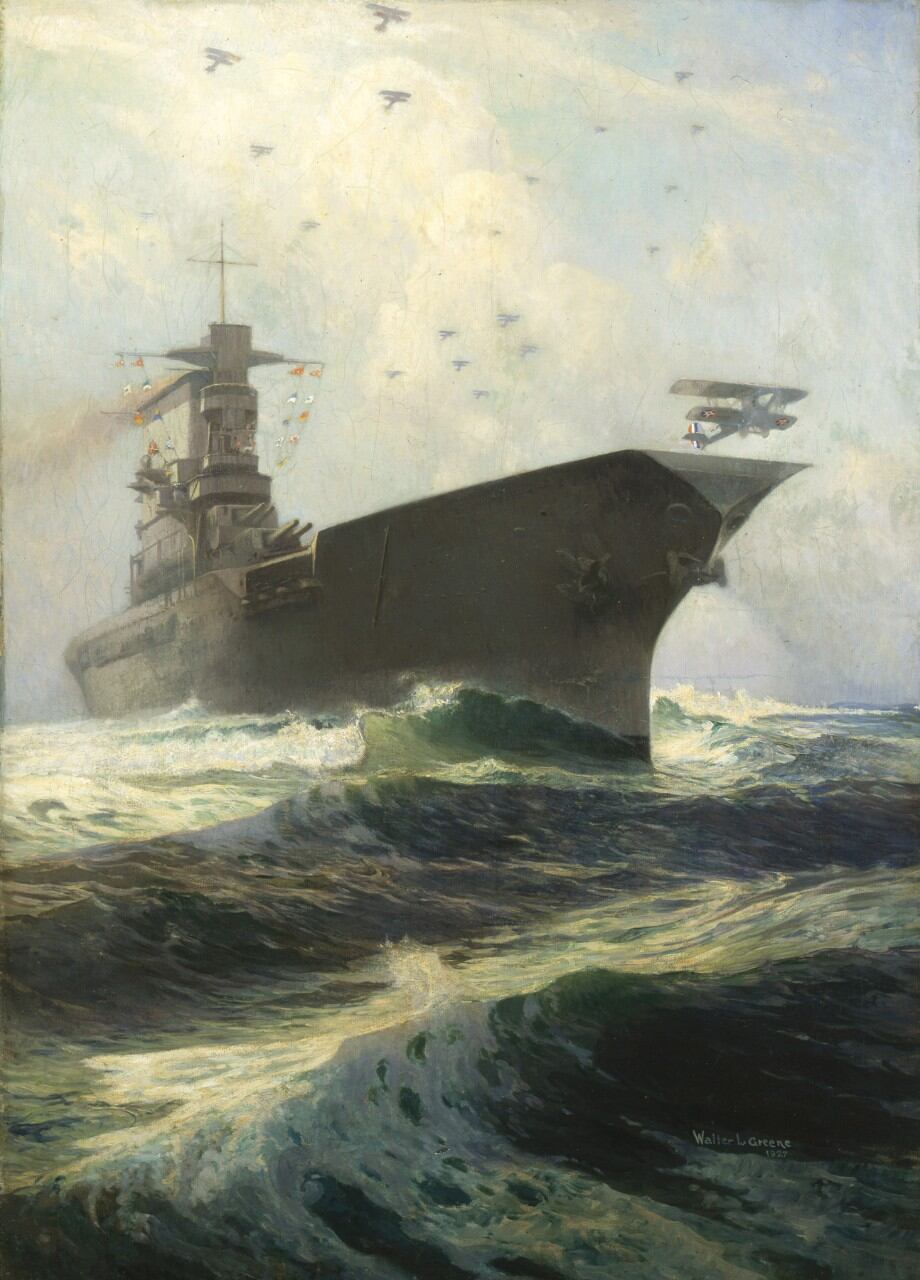
The Saratoga’s war began fitfully.
After the attack on Pearl Harbor, the big carrier sailed from San Diego to Hawaii and then headed west as part of a task force intended to relieve besieged Wake Island.
When reconnaissance revealed a more powerful Japanese force in that vicinity, the Saratoga and accompanying vessels were recalled to Pearl on Dec. 23; Wake surrendered the same day.
Off Hawaii less than a month later, in January 1942, a Japanese submarine torpedoed the carrier, which had to limp to back to the West Coast for three months of repairs and improvements at Bremerton, Washington, including an antiaircraft upgrade.
That August the Saratoga supported the Guadalcanal landings and fought in the Battle of the Eastern Solomons — until another Japanese torpedo hit. Repaired at Pearl, Saratoga returned to the war zone in November 1942.
In the next 11 months the aging carrier sortied sparingly from the American naval base at Nouméa on New Caledonia. In mid- 1943, when the carrier Enterprise returned stateside for overhaul, the Saratoga became the only American flattop in the South Pacific, used for training runs but otherwise held in reserve.
The ship had missed out on several major carrier-on-carrier battles and spent so much time in port that sailors conferred on it caustic nicknames like “Pond Lily,” “Reluctant Dragon,” and “Sara Maru”—maru being Japanese for a civilian vessel.
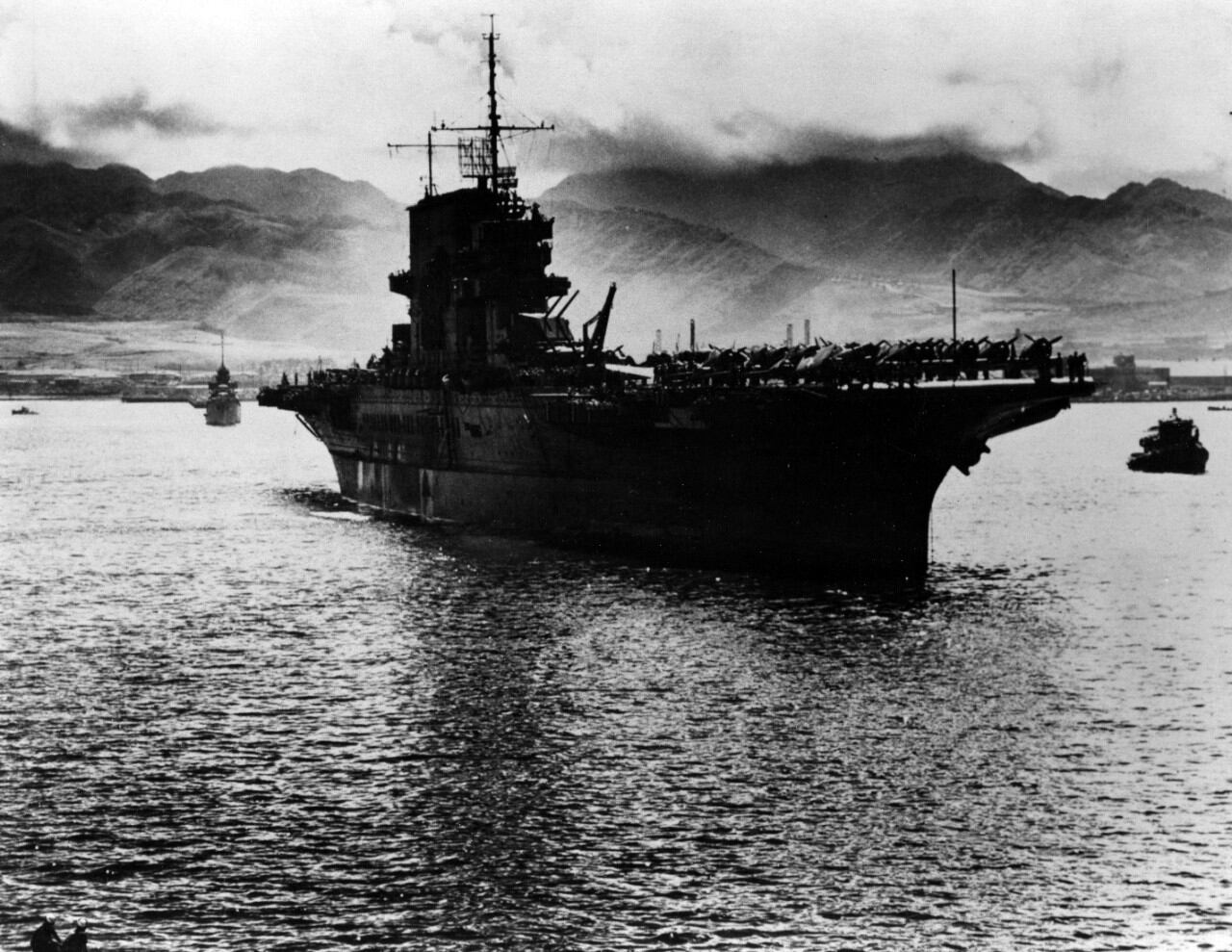
Life on board the Saratoga quickened in late 1943. The energetic Rear Adm. Frederick C. “Ted” Sherman arrived to command Task Force 38, with the Saratoga as flagship and Princeton in support.
The Saratoga got a new air group, led by Cmdr. Henry H. Caldwell. Its fighter squadron, VF-12, was headed by one of the navy’s best-known pilots, Cmdr. Joseph C. “Jumpin’ Joe” Clifton, a gridiron star at the Naval Academy. In August, Capt. John H. Cassady, an aviator who had served on board the Saratoga during peacetime, took the carrier’s helm.
On Nov. 1-2, in support of the Bougainville landings, Task Force 38 saw its first action.
The Saratoga and Princeton air groups sent a total of four raids against Buka and Bonis airdromes at the northern end of Bougainville, causing moderate damage.
Afterward, the task force sailed 500 miles southeast and joined with the oiler Kankakee waiting near Rennell Island, south of Guadalcanal, to refuel. The carriers and screening ships spent that day and most of the next siphoning oil from the huge tanker.
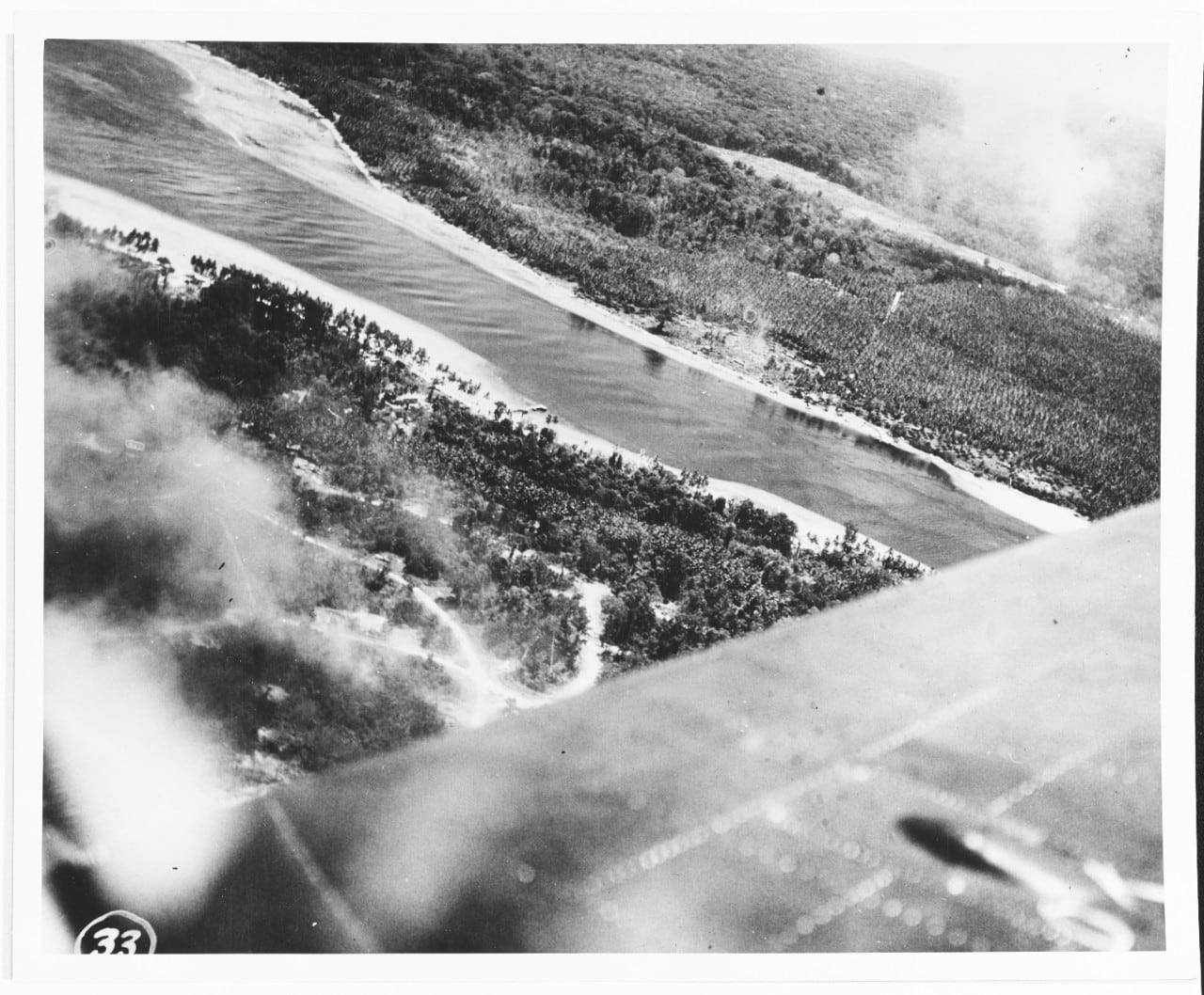
Meanwhile, that enemy armada heading for Rabaul — and presumably aimed at Bougainville — was giving Halsey fits.
As the admiral and his staff pondered how to parry the Japanese cruiser force, some at the chart table urged a defensive stance. Thurber disagreed. It would be a stretch, the operations officer said, but if Task Force 38 could hotfoot it into range of Rabaul, planes from the Saratoga and the Princeton might be able to surprise the enemy cruisers as they refueled.
Every ship in Task Force 38 was built for speed. Halsey’s aide, Lt. H. Douglas Moulton, ran the numbers with Thurber — twice. The two drafted a message to Sherman. Accompanied by Halsey’s chief of staff, Rear Adm. Robert B. “Mick” Carney, Thurber and Moulton walked the plan to the admiral’s quarters.
Without a glance at their papers Halsey asked, “You’re not going to send Merrill to Rabaul, are you?”
“No, sir,” they answered. “This is Ted Sherman again.”
Halsey got their meaning: in February 1942 Sherman had captained the Lexington when that carrier made the first stab at an air strike on Rabaul — a raid shelved when enemy planes spotted the task force 400 miles out. This time, Sherman would have two flattops — and perhaps the advantage of surprise.
Carney, who had known Halsey for decades, watched as the older man silently eyed the proposal. Besides committing the only two American carriers in the South Pacific to a dangerous fight, the plan would send Halsey’s only son into the dragon’s jaws.
Poor eyesight had kept William F. Halsey III out of the Naval Academy, but under looser wartime requirements he qualified for restricted duty as the Saratoga’s aviation supply officer.
“Every one of us knew what was going through the admiral’s mind,” Carney said. “It showed in his face, which suddenly looked 150 years old.”
Halsey handed the papers back to Carney. Unless he could keep those cruisers away from Bougainville, his entire campaign might unravel.
“Let ‘er go,” Halsey said.
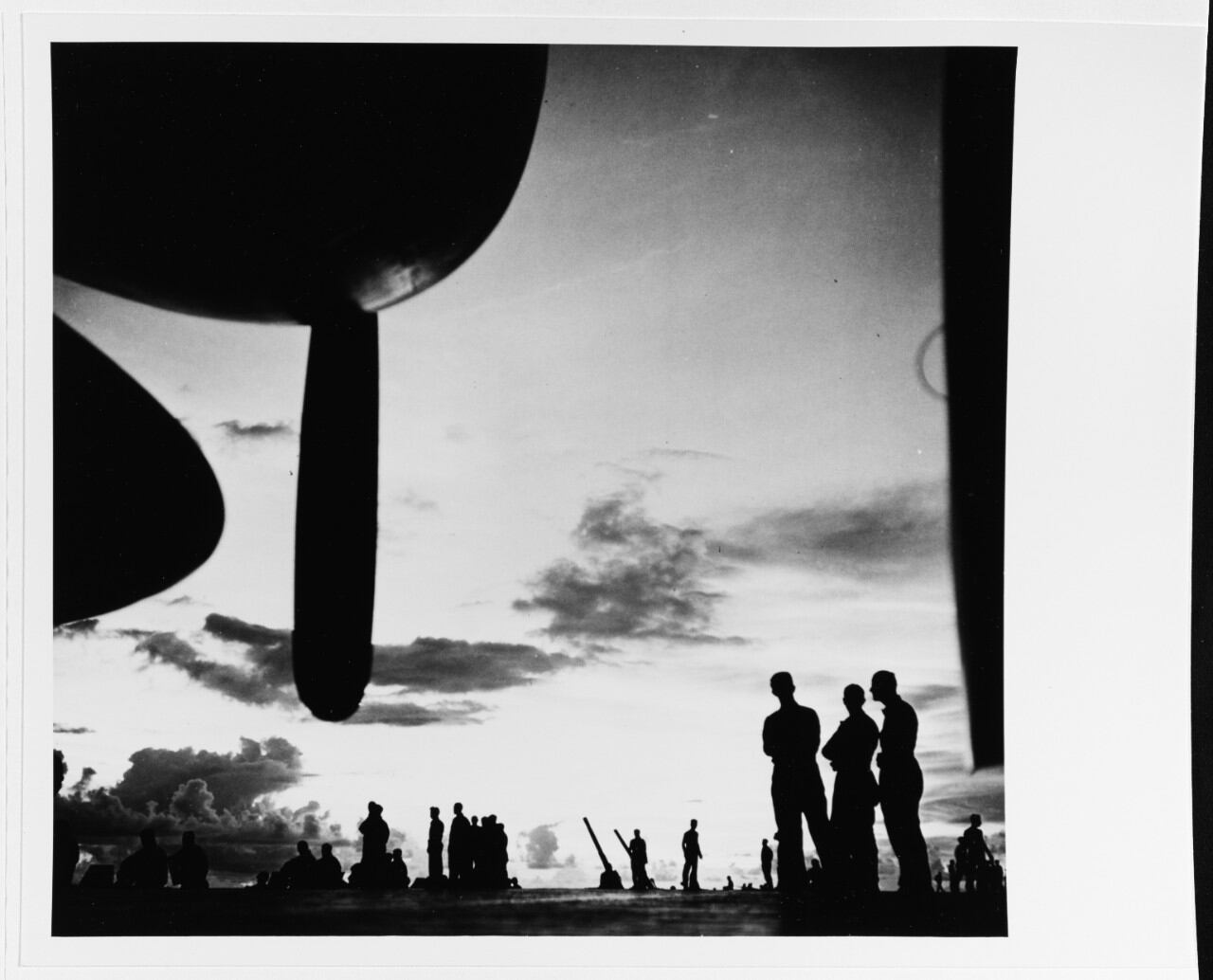
Task Force 38 had just topped off its tanks when the orders arrived: move at all possible speed to a position south of Bougainville, where at first light Saratoga and Princeton were to launch a maximum-effort strike against Rabaul.
Notifying Cassady, Sherman radioed Princeton and accompanying vessels. To get within range of Rabaul, they had to steam 500 miles. Sherman ordered a northwesterly course at flank speed, and soon the formation was running at 27 knots, a momentum the crews would maintain all night.
As air group personnel scraped for intelligence on their target, Cassady briefed Caldwell and the squadron commanders.
“Boys, we are hitting Rabaul tomorrow morning,” Cassady said. “This is a hell of a tough assignment. If we are not successful tomorrow, the Japs will very probably force us to abandon our invasion at Empress Augusta Bay.”
He told the aviators to focus on the enemy cruisers, adding that Sherman promised to have the carriers within reach when they had finished the job.
“You have damn little time [to prepare],” he said. “God bless you, boys.”
By daybreak on Nov. 5, Task Force 38 was southwest of Empress Augusta Bay and about 220 miles from Rabaul.
At 7 a.m. flight deck crews on the Saratoga began launching 33 F6F Hellcat fighters, 16 TBF Avenger torpedo planes, and 22 SBD Dauntless dive-bombers.
The Princeton added 19 Hellcats and seven Avengers.
The 97 aircraft climbed northwest toward Rabaul, and for the first half of the two-hour flight, Caldwell briefed squadron commanders by radio.
Visibility was excellent as the formation, stacked above 13,000 feet, crossed the southern tip of New Ireland and followed Saint George’s Channel toward the target.
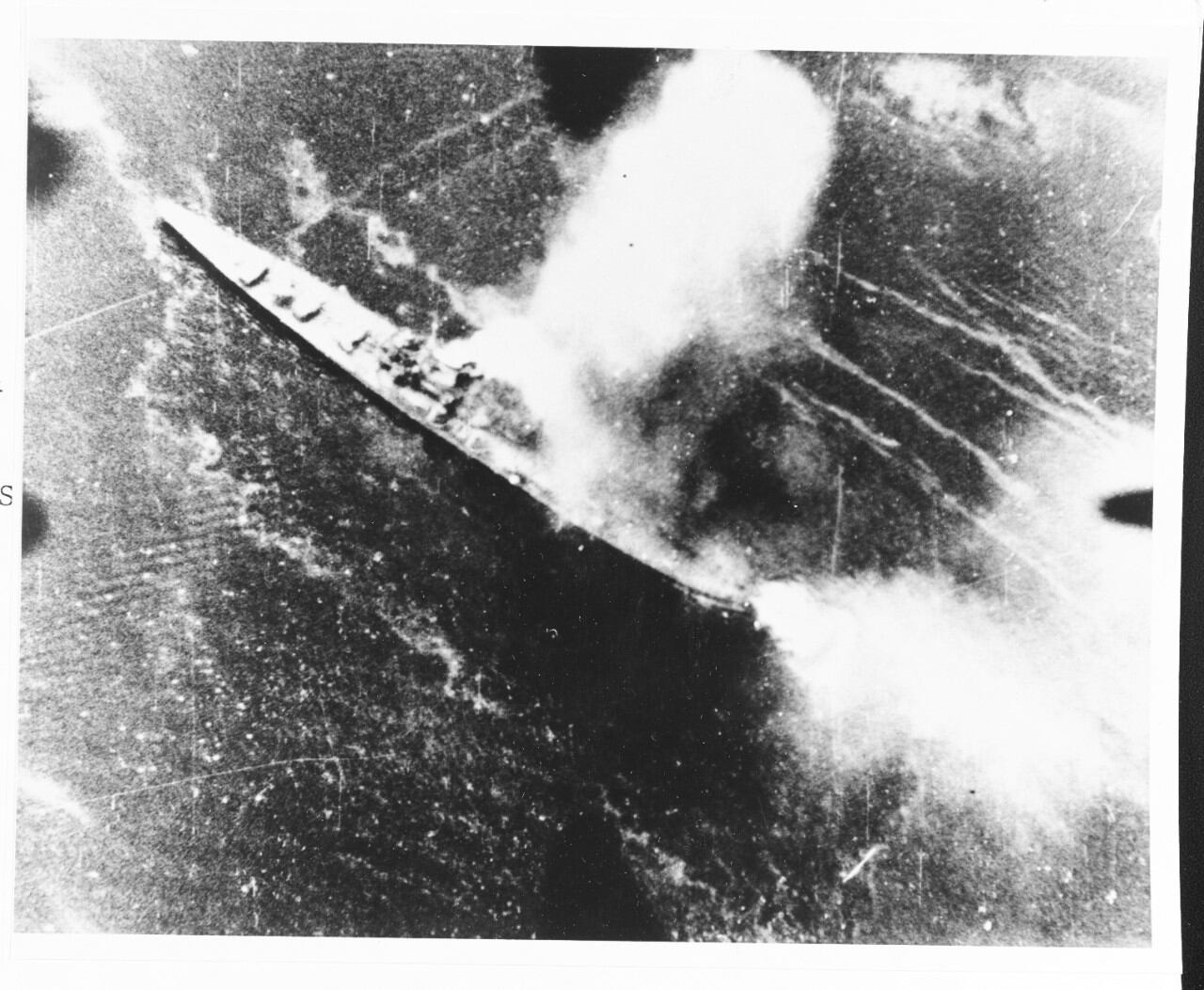
Able to see the full 50 miles to Rabaul, the attackers realized they had hit the jackpot. Six of the heavy cruisers on their hit list were moored in Simpson Harbor (the seventh was escorting troopships back to Truk) and other targets abounded: three light cruisers, 11 destroyers, and dozens of freighters.
The timing was equally excellent. Some cruisers were refueling; others rode at anchor.
The American pilots were to swoop from the north for a fast strike and then bolt back to the carriers. Caldwell steered the formation to the tip of New Britain. In the seven minutes the pilots needed to wheel wide and straighten out over Simpson Harbor, the Japanese scrambled 70-some interceptors.
Most were A6M Zeros from the Zuiho’s and Zuikaku’s carrier groups, recently deployed to Rabaul. The sight of so much enemy airpower startled Lt. Marvin Harper, flying close cover in a Hellcat.
“We looked up with utter astonishment. It was just mind-boggling,” Harper recalled. “With the number of airplanes and the altitude advantage they had, they should have decimated us.”
Unfamiliar with the boxy blue Hellcats, the Japanese aviators held back. Zero pilots did try to draw Americans out of formation, which would have allowed other interceptor pilots to dive on them out of the sun, invisible in the glare. However, Clifton held his pilots close, and the Zeros kept a respectful distance.
The Japanese flyers also had to watch out for their own antiaircraft fire. As the Americans neared, shore and ships’ batteries, even cruisers’ main guns, cut loose. The barrage brought down two Hellcats, but the formation stayed intact.
Crossing Simpson Harbor, the SBDs descended to 10,000 feet. Pilots rolled into choreographed wingovers and began the two-mile dive.
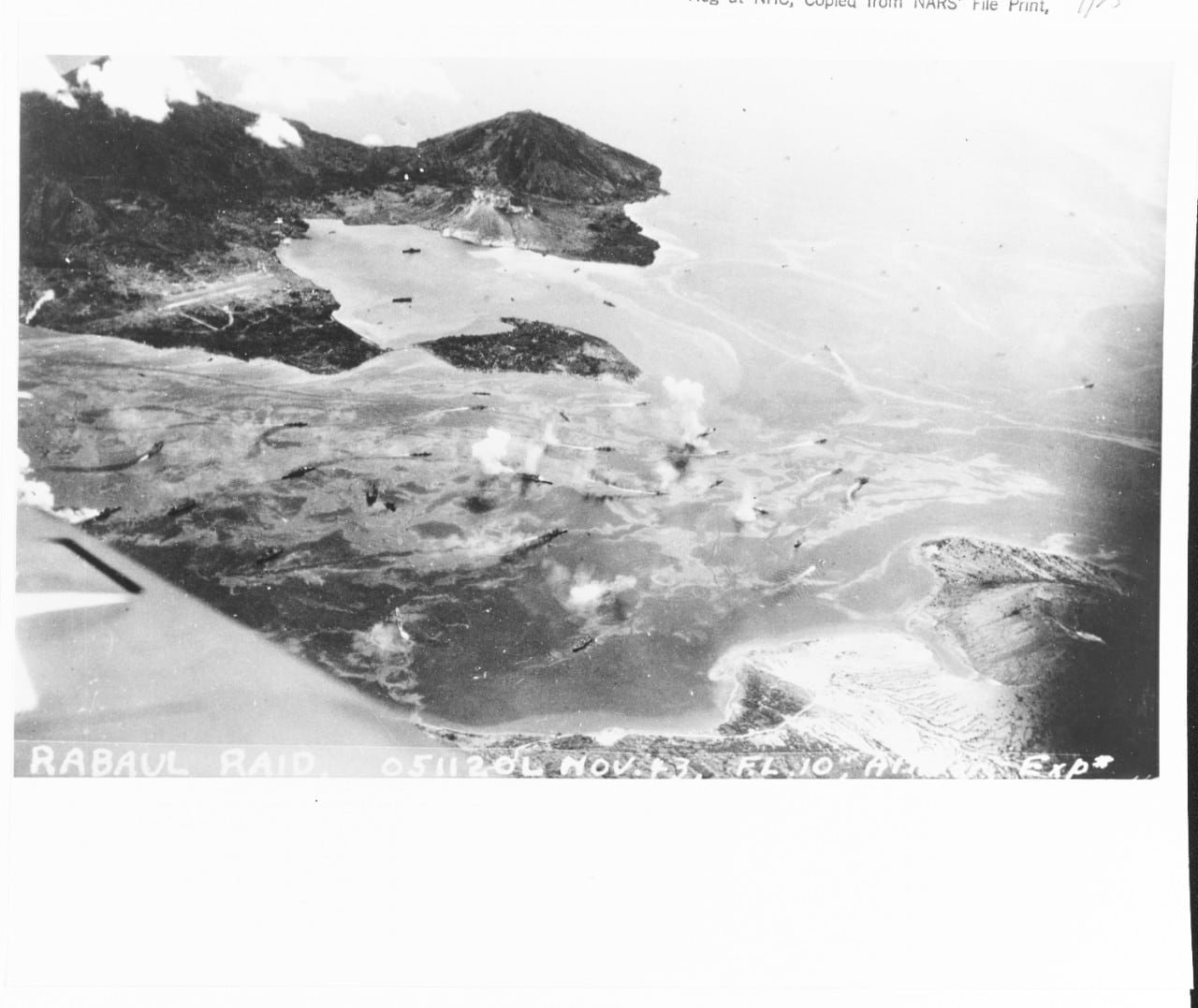
Over the intercom a gunner reported that most antiaircraft fire was bursting behind his plane — until enemy gunners sharpened their game.
“They are hitting on our left now!” he called out. “They are hitting on our right… I give up; they are all around us.”
Seconds later a shell scored a direct hit on the diving plane and the intercom fell silent. The young airman was dead.
One by one, the SBDs roared down on cruisers at anchor or slowly getting under way.
The 668-foot cruiser Maya, of the heavy Takao class, had just cast off fueling lines when a bomb hit its portside scout plane deck. The explosion deformed Maya’s hull and started a fire that engulfed an engine room, killing 70 men and wounding 60.
Class namesake Takao caught a heavy bomb on its main deck that killed 23 men.
Heavy cruiser Atago was refueling when three SBDs attacked and missed — but only by feet; blast effects and shrapnel killed 22 men, including the captain.
A thousand-pounder hit heavy cruiser Mogami between its first two turrets. The bomb detonated below, badly damaging the hull and killing 19 men. To keep ammunition from exploding, the crew flooded the Mogami’s forward magazines.
The torpedo bombers were less successful.
Of 22 fish dropped, Japanese records cite two hits — both duds. One slightly bashed a light cruiser, the other punctured a destroyer’s fuel tank.
Now came the most dangerous phase: getting away. Jinking, skidding, and occasionally hopping over a ship, the Avengers and Dauntlesses sped across Simpson Harbor through a curtain of enemy fire.
“I was face-to-face with the eight-inch guns of a Jap cruiser that was pushing out everything it had at me,” remembered Lt. Cmdr. Vincent W. Hathorn, an SBD division leader.
“The only thing I could think of doing was to pull my gun switch and give him return fire with my two fixed .50-caliber guns. I thought, ‘This is pretty silly, me dueling with this joker.’ And then I got past him, and there were two destroyers, about twenty-four hundred tons each, doing the same thing to me. That made the battle a little more even.”
Zeros aggressively engaged Hellcats by the dozen in an aerial brawl, with no pair of foes able to hammer one another for long lest somebody else land a sucker punch.
American pilots and gunners claimed 28 enemy planes shot down, including a twin-engine bomber.
Actual losses, according to Japanese records, amounted to four single-engine planes; the “bomber” turned out to be a transport that crash-landed on Tobera airdrome, 15 miles southeast of Simpson Harbor.
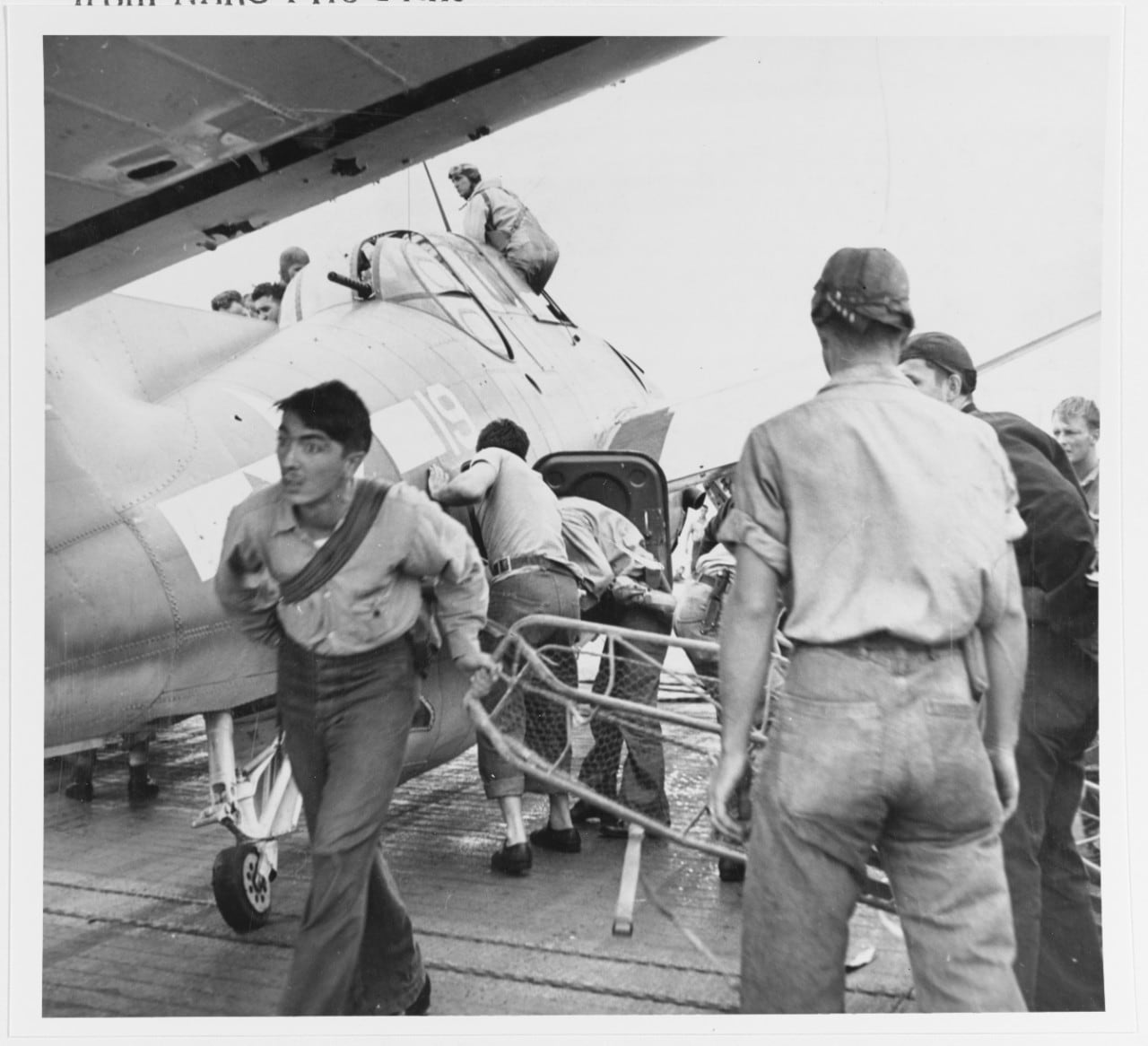
As the melee moved out to sea, several American planes fell or were ditched. The only members of the strike force maintaining position were Cmdr. Caldwell in an Avenger and his escort of two Hellcats, observing the strike from 10,000 feet.
Crammed in behind Caldwell, Photographer’s Mate Paul T. Barnett was documenting the Japanese ships’ attempts to escape.
Suddenly eight Zeros jumped the three planes. The Hellcat piloted by Lt. j.g. Stanley K. Crockett veered out of the fight when a 20mm round severed his plane’s battery cable.
Gunfire riddled Ensign Carlton W. Roberts’s Hellcat with almost 270 bullet and shrapnel holes — but the armored seat protected Roberts, who sustained only superficial wounds.
Caldwell’s plane took a similar beating. His turret gunner and radioman returned fire until wounded, their weapons falling silent.
A Zero’s 7.7mm round caught Barnett in the head; he bled to death.
Caldwell assumed he was the only man alive on board the plane until the radioman handed him a note saying the other two were “out of commission.”
The Avenger had no radio, no hydraulics, no aileron controls, and only one main wheel would extend.
Even so, Caldwell landed on the Saratoga on his first attempt.
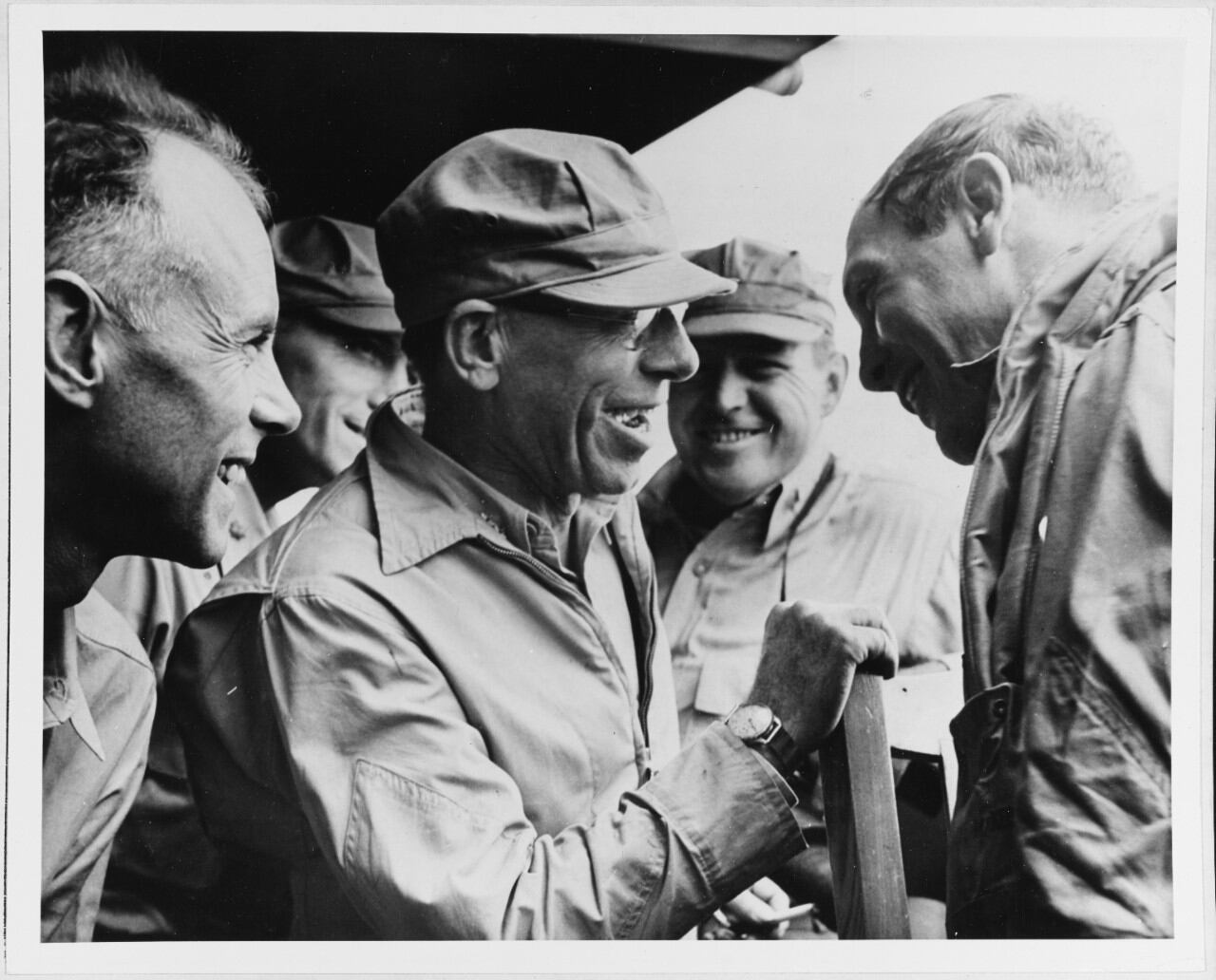
As carrier crews counted planes and airmen, they realized how well the sortie had paid off. Only six American aircraft were missing. Several damaged planes set down in the water, bringing the cost to nine aircraft and 14 men.
For that price, the dive bombers had obtained phenomenal results. With only 22 bombs the Dauntlesses had damaged five of six heavy cruisers, two light cruisers, and two destroyers badly enough to eliminate the cruiser force as a threat to American forces at Bougainville.
The news delighted Halsey. He had preserved the Bougainville lodgment, and still had his two carriers along with most of their air strength. His boy was safe.
“I took a deep breath,” he wrote. “So did the men at Torokina; so did Ted Sherman.”
He sent the task force a glowing message:
REPORT OF ATTACK IS REAL MUSIC TO ME. WHEN THE SARATOGA IS GIVEN A CHANCE SHE IS DEADLY. PRINCETON TOO TAKES A DEEP INITIAL BOW IN THE SOUTH PACIFIC. MAY THE JAP CRIPPLES PERMANENTLY BE BURIED IN DAVY JONES LOCKER. A FUNERAL DIRGE HAS BEEN SOUNDED FOR TOJO’S STRONGEST SOUTH PACIFIC BASE.
Halsey’s words proved prophetic. After the Saratoga and the Princeton returned on Nov. 11 with the carriers Bunker Hill, Independence, and Essex for another go at Simpson Harbor, the Imperial Navy promptly pulled its cruisers out of Rabaul and back to Truk, later sending most of them to Japan for repairs.
The Combined Fleet never sent another cruiser to Simpson Harbor.
Besides illustrating what fast carriers could accomplish under duress, the overnight raid by Saratoga and Princeton showed that a flattop as old as any afloat still could project a powerful striking force over a long distance in a remarkably short time.
The Saratoga spent the second half of 1944 as a training vessel. On Feb. 21, 1945, the warship was at Iwo Jima, carrying night fighters, when kamikaze damage sent it stateside for repairs.
Used as a floating classroom until Japan surrendered, the vessel next served as a troopship, ferrying men home from the Pacific.
Anchored at Bikini Atoll in 1946 as one of 95 test vessels, the Saratoga survived the blast from a nuclear bomb dropped from a B-29 and exploded midair.
A second device, detonated underwater, finally sent the venerable warship to the bottom.
The story originally appeared in the August 2014 issue of World War II, a sister magazine of Navy Times. To subscribe, click here.




